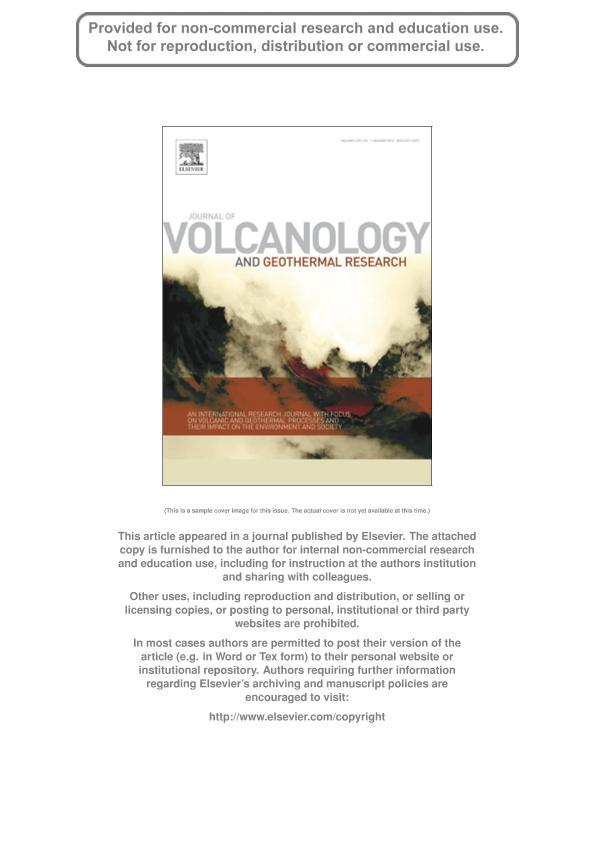Artículo
Diverse subaerial and sublacustrine hot spring settings of the Cerro Negro epithermal system (Jurassic, Deseado Massif), Patagonia, Argentina
Fecha de publicación:
04/2012
Editorial:
Elsevier Science
Revista:
Journal of Volcanology and Geothermal Research
ISSN:
0377-0273
Idioma:
Inglés
Tipo de recurso:
Artículo publicado
Clasificación temática:
Resumen
The Late Jurassic (~150Ma) Cerro Negro volcanic-epithermal-geothermal system (~15km 2 area), Deseado Massif, Patagonia, Argentina, includes two inferred volcanic emission centers characterized by rhyolitic domes linked along NW-SE regional faults that are associated with deeper level Au/Ag mineralization to the NW, and with shallow epithermal quartz veins and mainly travertine surface hot spring manifestations to the SE. Some travertines are silica-replaced, and siliceous and mixed silica-carbonate geothermal deposits also are found. Five hot spring-related facies associations were mapped in detail, which show morphological and textural similarities to Pleistocene-Recent geothermal deposits at Yellowstone National Park (U.S.A.), the Kenya Rift Valley, and elsewhere. They are interpreted to represent subaerial travertine fissure ridge/mound deposits (low-flow spring discharge) and apron terraces (high-flow spring discharge), as well as mixed silica-carbonate lake margin and shallow lake terrace vent-conduit tubes, stromatolitic mounds, and volcano-shaped cones. The nearly 200 mapped fossil vent-associated deposits at Cerro Negro are on a geographical and numerical scale comparable with subaerial and sublacustrine hydrothermal vents at Mammoth Hot Springs, and affiliated with Yellowstone Lake, respectively. Overall, the Cerro Negro geothermal system yields paleoenvironmentally significant textural details of variable quality, owing to both the differential preservation potential of particular subaerial versus subaqueous facies, as well as to the timing and extent of carbonate diagenesis and silica replacement of some deposits. For example, the western fault associated with the Eureka epithermal quartz vein facilitated early silicification of the travertine deposits in the SE volcanic emission center, thereby preserving high-quality, microbial macro- and micro-textures of this silica-replaced "pseudosinter." Cerro Negro provides an opportunity to reconstruct paleogeographic, paleohydrologic and paleoenvironmental associations in a well-exposed, extensive and diverse fossil geothermal system. This Late Jurassic hydrothermal deposit will likely contribute to a better understanding of the impact of depositional and post-depositional history on the development and long-term preservation potential of Lagerstätte in epithermal settings and, more generally, in extreme environments of the geological record.
Archivos asociados
Licencia
Identificadores
Colecciones
Articulos(CCT - LA PLATA)
Articulos de CTRO.CIENTIFICO TECNOL.CONICET - LA PLATA
Articulos de CTRO.CIENTIFICO TECNOL.CONICET - LA PLATA
Citación
Guido, Diego Martin; Campbell, Kathleen; Diverse subaerial and sublacustrine hot spring settings of the Cerro Negro epithermal system (Jurassic, Deseado Massif), Patagonia, Argentina; Elsevier Science; Journal of Volcanology and Geothermal Research; 229-230; 4-2012; 1-12
Compartir
Altmétricas




